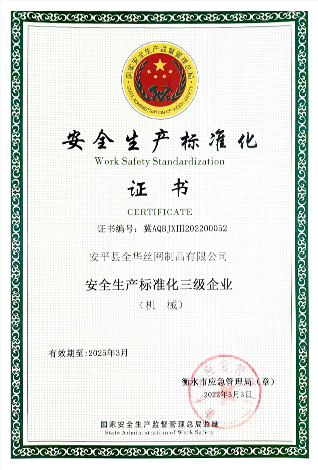តុលា . 14, 2024 21:41 Back to list
Optimal Height Restrictions for Gabion Retaining Walls and Their Structural Integrity
Best Gabion Retaining Wall Maximum Height A Comprehensive Overview
Gabion retaining walls have gained considerable popularity in landscape design and construction due to their versatility, functionality, and aesthetic appeal. Made from wire mesh cages filled with stones or other materials, these walls are not only robust but also promote sustainable practices by using natural materials. However, one of the most common questions that arise when considering a gabion wall is what is the maximum height of a gabion retaining wall? This article delves into the factors affecting the height of these structures and offers insights into best practices for their construction.
Understanding Gabion Walls
A gabion wall consists of wire baskets filled with locally sourced stones, rocks, or recycled materials. The primary purpose of these walls is to retain soil, prevent erosion, and provide structural support. Their porous nature allows for effective water drainage, minimizing pressure buildup behind the wall, which is a crucial factor in their design.
Factors Affecting Maximum Height
1. Soil Conditions The bearing capacity of the soil behind and beneath the wall plays a significant role in determining how tall a gabion wall can be. If the soil can adequately support the weight of the wall structure, greater heights can be achieved. Conversely, poor soil conditions may necessitate a lower wall to prevent collapse or shifting over time.
2. Wall Design The design of a gabion wall impacts its stability. A well-engineered gabion wall with a proper cross-sectional area, weight distribution, and base width can withstand greater heights. Integrating features such as steps or terraces can also help distribute the forces exerted on the wall, allowing it to reach a taller height.
best gabion retaining wall maximum height

3. Drainage One of the primary advantages of gabion walls is their drainage capability. However, insufficient drainage can lead to increased hydrostatic pressure. Therefore, incorporating proper drainage techniques—such as weep holes or drainage pipes—is essential to maintain wall integrity and support greater heights.
4. Material Quality The quality of the wire mesh and filler materials affects the overall strength and durability of the wall. High-quality, corrosion-resistant materials will prolong the lifespan of the gabion wall and allow for taller constructions. It's essential to use materials that meet industry standards to ensure resilience against environmental factors.
5. Construction Techniques Proper construction techniques are critical for achieving maximum height. This includes ensuring that the walls are built level, using the correct size of stones for filling, and adequately tying and securing the wire mesh to withstand the pressures exerted by the soil and water.
Recommended Heights
While there is no universally established maximum height for gabion retaining walls, practical applications suggest that they can typically be constructed up to 6-10 feet (1.8-3 meters) without requiring extensive engineering input. For taller structures, professional design assistance is recommended, especially if the wall's height surpasses 10 feet (3 meters). Engineering calculations that consider local soil conditions, load factors, and environmental impacts are necessary for heights exceeding this range.
Conclusion
Gabion retaining walls are an effective solution for soil retention and erosion prevention while providing aesthetic and environmental benefits. To determine the maximum height of a gabion wall, one must consider various factors, including soil conditions, wall design, drainage capabilities, material quality, and construction techniques. By adhering to best practices and seeking professional guidance when necessary, homeowners and builders can successfully integrate gabion retaining walls into their projects, reaping the benefits of their durability and visual appeal. Ultimately, these walls not only serve a functional purpose but also contribute to the sustainable management of landscapes, making them a commendable choice for any construction endeavor.
-
Visualizing Gabion 3D Integration in Urban Landscapes with Rendering
NewsJul.23,2025
-
The Design and Sustainability of Gabion Wire Mesh Panels
NewsJul.23,2025
-
The Acoustic Performance of Gabion Sound Barriers in Urban Environments
NewsJul.23,2025
-
Mastering the Installation of Galvanized Gabion Structures
NewsJul.23,2025
-
Gabion Boxes: Pioneering Sustainable Infrastructure Across the Globe
NewsJul.23,2025
-
Custom PVC Coated Gabion Boxes for Aesthetic Excellence
NewsJul.23,2025
-
Installation Tips for Gabion Wire Baskets in Erosion Control Projects
NewsJul.21,2025






